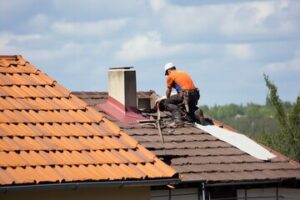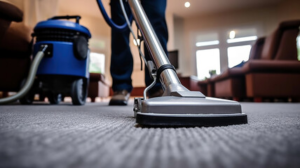Plumbing is a trade that involves the installation and repair of pipes, fixtures, and appliances. It encompasses a variety of skills, including the interpretation of blueprints and building codes, as well as the use of tools.

Many people associate plumbing with leaky faucets and clogged toilets, but the profession is much more complex. It’s responsible for ensuring that water is available for drinking and washing, while also getting rid of waste efficiently. Visit https://www.plumbing-express.com to learn more.
The water supply is the infrastructure for the collection, transmission, treatment, storage and distribution of water for homes, commercial establishments, industry and irrigation. It may also serve such public needs as street washing and firefighting. It is often the most complex and costly municipal service to operate and maintain. It is not to be confused with sewage or drainage systems which are usually separate from and downstream of water supply networks.
The source of the water in a public system is typically surface or groundwater. It is conveyed to the treatment plant by conduits or aqueducts and then treated to meet quality and quantity requirements. This processed water is then delivered to the distribution system through supply conduits that are usually based on a network of pipes of different sizes.
This network may be designed to include a series of loops that avoid dead ends in order to ensure that the water is always circulating, thus avoiding contamination and maintaining a reliable service. It is also designed with the right number, types and sizes of valves in order to allow for the isolation and maintenance of individual sections of the network.
During the design and construction of any water supply system, the quality of the water supplied to users is considered a major concern. This is because the health of people depends on the quality of the water used for drinking, cooking and bathing.
Water suppliers have developed a variety of programs to help their customers save water. They are also working to improve the efficiency of their own systems to cut costs and reduce consumption.
Some States collect data on the operation of public water supplies for a variety of purposes, such as establishing allocation programs; compliance with the Safe Drinking Water Act (most States); State public health, environmental or water conservation, or emergency planning in response to droughts or other disasters.
A public water supply includes a source, all mains, pipelines, piping, connection fittings, valves and appurtenances within the limits of a public system which is operated by a governmental body or its agents and serves at least 25 service connections and regularly carries out the business of furnishing piped water for domestic use. This does not include facilities or water-supply services for thermoelectric power generation or for mining or agriculture which are not normally regulated under the Safe Drinking Water Act.
Sewage Disposal
Sewage disposal is the process of removing water-carried wastes from residential, commercial and industrial buildings. It safeguards a community’s water supply by removing microscopic dissolved matter, harmful bacteria and chemical substances from sewage. This helps protect public health by preventing the spread of diseases like cholera and dysentery. It also prevents damage to natural bodies of water, such as lakes, rivers and oceans.
Most sewage systems have two main components: the collection system and the treatment plant. The collection system, often called a sewer, is comprised of pipes, manhole drains, catch basins and traps that collect wastewater and transport it to the treatment plant. The system may be centralized, with wastewater being directed to a single treatment plant from several cities, or it may be decentralized, with each home and business having its own septic tank and leach field.
A sewage treatment plant removes the bacteria and solid wastes from wastewater through several physical, chemical and biological processes. Physical processes include screening, skimming and filtration. Chemicals are used to coagulate heavy particles into smaller pieces that can be more easily separated and settled. Primary treatment removes about half of the suspended solids and bacteria from sewage. Some cities use chlorine gas to kill the remaining bacteria in sewage, a process known as chlorination.
After settling, sewage is treated by a secondary sedimentation process. The water passes through a screen to filter out large objects, and then it goes into a long, shallow trough that acts as a trap. Small, hard objects sink to the bottom and are collected in a sludge pit while fats and oils float to the top and can be skimmed off.
The sludge that is removed from the bottom of the settling tank can be processed further to remove organic wastes and other contaminants. Some sludge is incinerated to produce energy, while other types of sludge can be digested by microorganisms to produce methane biogas or be used as fertilizer.
The resulting treated wastewater, called sewage effluent, is then discharged into a body of water that can be absorbed by soil, such as a lake, river or ocean. Some cities discharge sewage effluent directly to the sea, but this can be detrimental to marine life and has led to ecological problems, such as algal blooms that threaten human health.
Drainage
The drainage portion of a plumbing system takes wastewater and sewage away from fixtures like sinks, toilets, and bathtubs. This portion of the system includes pipes that connect to each fixture drain and lead to a main drainage line or septic tank. The piping in drain lines is sloped to help water flow easily, and vent pipes keep sewer gases from seeping into inhabited spaces.
The main drain line for a plumbing system is typically made of PVC or PEX, which are flexible and durable plastics. This type of piping is a good choice for most residential plumbing applications, because it is inexpensive and easy to install. It is also resistant to corrosion and other chemicals commonly found in household cleaners and disinfectants.
However, the piping in a plumbing system can clog and break due to hair, soap scum, and other debris. These problems can be very frustrating, and it’s important to have a plumber inspect your system to identify and repair any issues before they get worse.
Drainage systems are critical for keeping buildings safe and healthy. They whisk away stormwater and sewage, protect structural integrity, and prevent the growth of mold and mildew. While some people may think of drains as unsightly, they’re actually quite beautiful when designed properly.
For instance, floor drains can be incorporated into the design of a building to create an attractive, modern aesthetic. However, they must still meet basic hygienic standards. This is why careful consideration must be given to drain material selection, design, and installation specifications. Also, accessories like gratings and locking mechanisms should be chosen carefully to ensure safety and functionality.
While most people don’t think about their drainage systems on a daily basis, they depend on them to work properly. Without them, we would have dirty, stinky, and dangerously unsanitary environments. Thankfully, professional plumbers can keep these systems running smoothly. Plumbing is a complex trade that requires extensive knowledge of water and gas pipes, fittings, tanks, and fixtures. It also involves reading blueprints and interpreting engineering specifications. Those who choose to become plumbers must be committed to learning new skills and technologies as the industry evolves.
Plumbing Maintenance
Plumbing systems are essential to the function and well-being of buildings and their occupants. They are complex networks of pipes and devices that provide sanitary conditions, potable water and modern services such as dishwashers, laundry machines and refrigerators. A poorly functioning or damaged plumbing system can lead to water damage, costly repairs and unpleasant experiences for building and facility occupants. Regular maintenance can extend the life of plumbing systems and reduce operational disruptions.
Every day, plumbing systems work hard to perform their essential tasks. This routine use can cause wear and tear, however, and over time pipes and fixtures may begin to fail. A plumber can identify and resolve issues before they become major problems, such as leaking, clogging or odors.
Preventative plumbing maintenance is an easy and cost-effective way to keep plumbing systems in good condition. Educating building occupants about proper water usage and encouraging them to report any suspected problems promptly can also help minimize the need for costly repairs down the road.
One of the most common plumbing issues is leaks. Even small leaks can escalate into serious problems, causing water damage, mold growth and/or high water bills. To prevent leaks, plumbing professionals recommend that homeowners regularly inspect their faucets, shower heads and pipes for any signs of dripping or moisture.
Another common problem is blocked drains. These can be caused by hair, food particles and other debris that can build up in drains over time. To prevent blockages, plumbers recommend that building occupants use drain screens or strainers to catch and remove any unwanted materials before they can enter the plumbing system.
In addition to preventing blockages, maintaining plumbing systems can also improve the quality of water. Older pipes can lead to lowered water pressure and mineral buildup, which can result in poor water quality. A plumbing professional can assess a home’s water quality and recommend an appropriate course of action, such as installing a water softener. This can improve water clarity, reduce the need for chemical-based cleaning products and prolong the life of plumbing systems.








